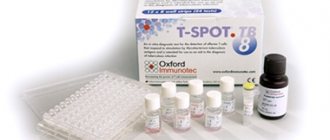Indications for examination
Bacterial culture is carried out if there is a suspicion of inflammatory urinary tract diseases.
Bacterial culture is indicated for adults and children with the following symptoms:
- discharge of urine, which is accompanied by a small amount of fluid, a burning sensation, pain and constant itching;
- negative results of a general urine test or urine test using the Nechiporenko method;
- pain and pulling sensations in the lumbar region;
- the need to choose antibacterial agents that allow you to get rid of parasitic life forms found in the human body.
Quite often, the urine culture procedure is carried out not only to determine the causative agent of the pathology and make the correct diagnosis, but also to select high-quality treatment methods. The procedure is also carried out in a situation where there is no visible effect from the therapy used for a long time.
In addition, this analysis is mandatory during pregnancy. It is noted that pregnant women must undergo this test twice: when registering with a medical institution, and immediately before giving birth. Compliance with this requirement is mandatory, since if parasitic forms or inflammation are not detected in a timely manner, the child may also suffer, which will be noticeable as he grows.
What pathologies are revealed by bacteriological analysis of urine?
Culture for pathogenic flora will help diagnose diseases such as:
- chronic urethritis;
- recurrent cystitis;
- pyelonephritis;
- paranephritis.
Bacteriological analysis of urine reveals the following infections depending on the pathogen:
- Staphylococci and streptococci
. Detects all types of pathogenic microorganisms that are dangerous for the child during pregnancy; - Chlamydia
. Pathogenic microorganisms in urine confirm a dubious diagnosis; - Gonorrhea
. Prescribed to a patient if his partner is a carrier of the virus; - Bacillus Koch
. The degree of bacteriuria determines the presence of tuberculosis and how affected the kidneys and urinary tract are in this disease; - Protea
. Proteus infection causes inflammation of the kidneys and urinary tract and can lead to acute pyelonephritis; - Enterococci
. These intestinal bacteria can be harmful to the urinary system; - Pseudomonas aeruginosa.
This bacterium causes cystitis, urethritis and pyelonephritis; - Whooping cough
. The analysis will detect the disease even at an early stage and with initial - symptoms;
- Klebsiella
. A dangerous bacterium that is resistant to most antibiotics. Causes inflammatory diseases of the urinary tract and can lead to various serious consequences; - Dysenteric compounds
. Able to detect salmonellosis and dysentery in patients of any age.
Preparation stage
Before carrying out the procedure for collecting urine for microflora, you should properly prepare. To do this, it is recommended to perform the following manipulations in preparation for the study:
- 14 days before submitting biological material, you should stop taking antibacterial agents, as they can distort the results. In this case, refusal of antibiotics is allowed only after preliminary consultation with the treating doctor.
- Strong physical activity provokes an increase in the amount of protein in the body, so the day before urine collection it is advised to refrain from exercise and other activities.
- The day before the collection of biomaterial, it is worth limiting the consumption of coloring food products.
By following these simple rules, you are guaranteed to obtain an accurate result. You need to start preparing for the procedure at least 2 weeks in advance.
When is the test ordered?
Urine culture is a complex and highly informative study. Prescribed only by urologists or gynecologists for certain indications:
- there is a suspicion of the development of an infectious process in the body;
- treatment control is necessary ;
- confirmation of diagnosis is required ;
- a woman plans to become pregnant ;
- there was a relapse of the disease ;
- the patient has diabetes mellitus and the body is very weakened;
- sensitivity to antibiotics is established .
Based on the results obtained, the doctor draws up a treatment regimen. Pregnant women and patients with problems in the endocrine system must undergo the test. If the pregnancy progresses normally and the woman does not experience kidney problems, the test is scheduled immediately before childbirth, at the end of the third trimester.
Urine collection rules
Collect urine for analysis using the following algorithm:
- A sterile plastic container is purchased, where the urine will be collected. The container can be purchased at the pharmacy.
- The genitals are thoroughly cleaned. It is recommended to use warm water for washing; the use of shower gels and soap is prohibited.
- To obtain a true test result, it is necessary to provide an average dose of urine. It is recommended to urinate into the toilet for a couple of seconds, then into a sterile jar, and finish the process of urinating again into the toilet.
- After collecting the required volume of liquid, the container is tightly closed. Do not touch the inside of the container because this will distort the final result.
- The collected material must be sent to the laboratory as quickly as possible. The shelf life of the biomaterial is 6 hours, and this is provided that the urine is stored in a dark and cool place.
To detect the presence of pathogens, you need to use only morning urine (it should be collected immediately after the person wakes up). In some situations, the doctor insists on collecting urine throughout the day. In this situation, one rule must be observed: only urine isolated no earlier than 2-3 hours after the previous collection of biological material is suitable for research.
The portion of urine submitted for studying microflora should be 5-10 ml. Otherwise, you will not be able to get a reliable result.
If the patient has a catheter, urine collection is carried out strictly under the supervision of a healthcare professional. The nurse, using tweezers, clamps the catheter, after which he sterilizes with alcohol and, using a needle, takes out the required amount of liquid. After which the urine is poured into a special container and taken for examination. When submitting urine for analysis, it is recommended to indicate not only the patient’s data, but also the time of collection, the method used and the possible diagnosis.
The procedure also has a significant drawback - the duration of the study. Quite often, the doctor is forced to prescribe treatment even before receiving the test results.
Method for testing urine for infection
To identify an infectious pathogen
urine culture analysis is carried out according to the following algorithm:
- Primary examination of urinary fluid sediment under a microscope (not always performed).
- Primary urine culture for sterility to identify the type of pathogen.
- Accumulation of harvested crops.
- Study of the characteristics of identified bacteria.
- Final identification of the pathogen.
For the test - urine culture - it is necessary to select a certain medium: for staphylococci - blood agar, streptococci - sugar solution, etc. However, sowing can also be carried out in several environments (maximum 3-4).
Bacteriological urine analysis generally takes 7-10 days. The resulting result will contain a description of the size, shape, transparency, shade, surface structure, and growth of the colony in height.
Decoding the results
Urine itself is sterile and does not contain any bacteria. If harmful microorganisms are detected in the biomaterial, doctors conclude that they entered the urine from the genitals. This result is interpreted as positive. But this does not at all mean that the patient has diseases of the urinary system.
If the analysis reveals a large number of pathogenic microorganisms (more than 10 thousand per 1 ml), a disease called bacteriuria is diagnosed. The main sign of this pathology is the predominance of one type of bacteria in the urine.
If several types of bacteria were detected simultaneously, it is concluded that the contamination of the biomaterial occurred due to an infection on the skin. Then the doctor recommends taking the test again to confirm or refute the result.
The following degrees of bacteriuria are distinguished (the value obtained as a result of the study is taken into account):
- 10-10-2 – incidental infection is observed during the collection of biomaterial (conditionally normal result);
- 103 – indicates the absence of an inflammatory process in the body (normal);
- 104 – the result is in doubt, a repeat test is required;
- 105 – inflammation is present in the body.
Method for determining the sensitivity of pathogens to antibiotics
To determine the sensitivity of microorganisms to antibiotics (antibioticogram)
urine culture analysis is carried out according to the following algorithm:
- Dividing the Petri dish into several sectors and placing antibiotic strips in each of them.
- Color marking of each area and sowing with the selected crop.
- Place the bowl in a thermostat with a temperature of 36.6.
- Conducting daily monitoring. The absence of growth and reproduction of bacteria means that the antibiotic suppresses them, which means it was chosen correctly.
Otherwise, the pathogen is resistant to the action of this antibiotic, and it must be replaced.
An antibioticogram is performed only when bacteria are detected in excess of 104 CFU/ml. The duration of such an analysis is 4-5 days. Modern express methods allow you to get results within 2 days. In emergency cases, when the result is necessary for the treatment of a seriously ill patient, preliminary data can be provided after 4 hours.
Reasons for false indicators
Occasionally, when deciphering a urine culture, the patient receives a false positive result. This situation may arise due to the following reasons:
- incorrect collection of biological material;
- lack of proper experience of a specialist examining urine;
- the patient has been taking antibacterial and diuretic medications for a long time;
- personal hygiene rules are poorly observed before urine collection;
- difficulty urinating.
But the probability of a false positive result is quite low, and if you follow all the rules for preparing for the procedure, the result will be accurate.
In general, urine culture is a fairly effective procedure, responsible not only for the detection of harmful microorganisms, but also for the selection of therapy, since susceptibility to a particular drug is established. The price of this procedure starts from 340 rubles.
Urine culture analysis during pregnancy
During pregnancy, a woman is even more vulnerable than usual to various diseases. These include infections of various origins, including sexually transmitted ones. In addition, studies have proven that 45% of all fetal deaths (miscarriage, miscarriage) occurred due to intrauterine infection.
Bacteriological analysis of urine during pregnancy is mandatory, even in the absence of signs of infection. The infection could occur for a long time and asymptomatically in a woman’s body and become more active during pregnancy (up to 6% of pregnant women have latent bacteriuria).
The importance of urine culture testing during pregnancy is demonstrated by the following:
- detection and identification of infectious agents;
- carrying out possible treatment taking into account the duration of pregnancy;
- prevention of infection of the fetus and causing irreparable organ changes incompatible with life.
Urine culture should be carried out twice during pregnancy - in the 1st trimester and almost before birth (at 36 weeks). If appropriate indications are available, this value may increase. A doctor may prescribe additional urine cultures for a pregnant woman if she suffers from diseases of the bladder and kidneys, or if leukocytes and protein were detected during a general urine test.
The rules for preparing and collecting material for a pregnant woman are general. In the later stages of pregnancy, the fetus puts pressure on the bladder, so it is sometimes difficult for a woman to endure until the morning. It is recommended to go to the toilet with an alarm clock at 1-2 am, and then collect urine for analysis in the morning.
How is the analysis carried out?
The biomaterial is collected in a special cup purchased at the pharmacy. It must be clean and dry. There is no point in collecting urine in the evening and taking it to the laboratory the next morning; procedures must be done 2-4 hours before the test.
Only morning urine is used for examination; you need to take an average portion of 70 ml. The first jet washes the urinary canals, it descends, the last one is also not needed for analysis. It is important that the edge of the container does not touch the labia. When the material is selected, the lid of the container is carefully closed and the sample is taken to the laboratory.







